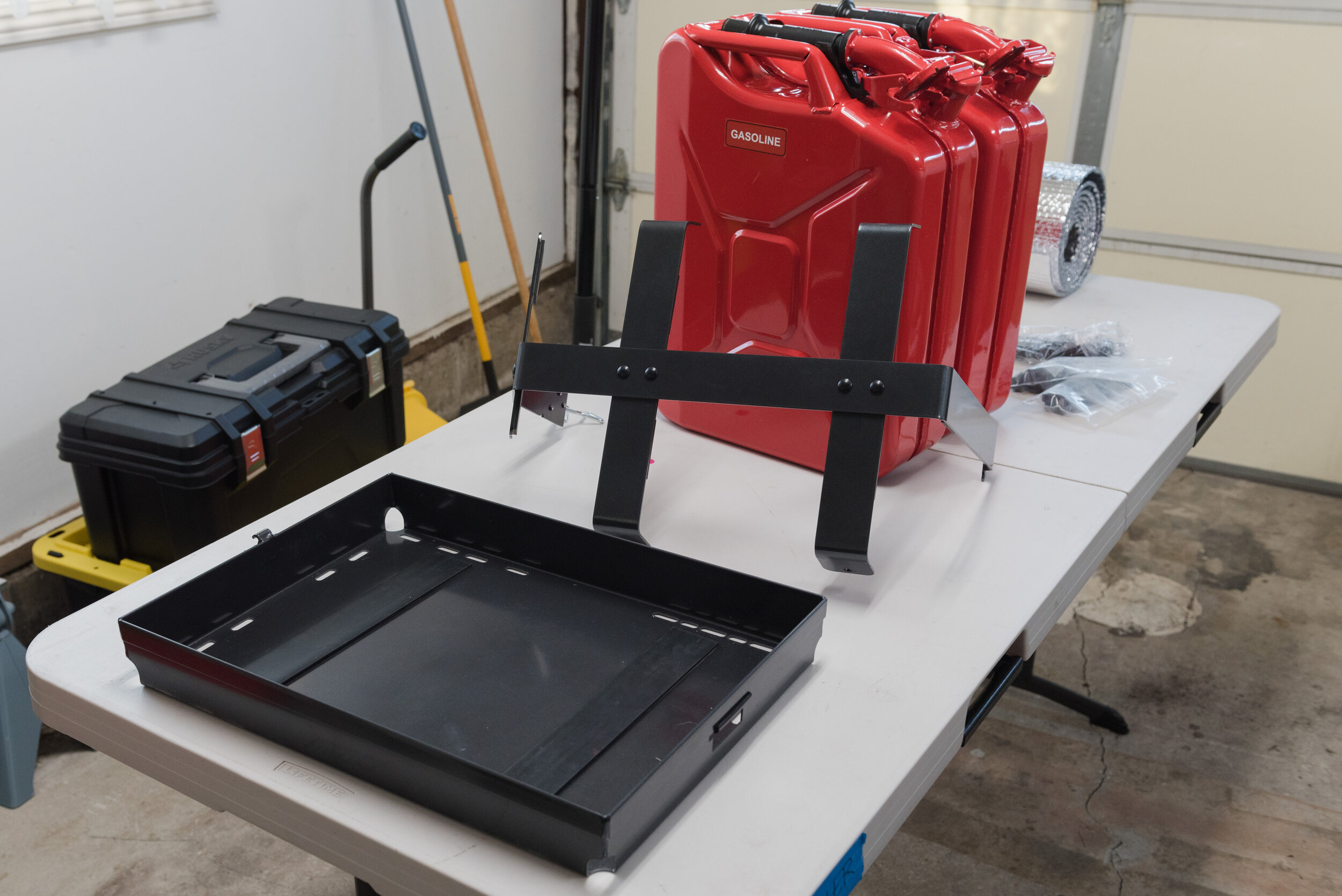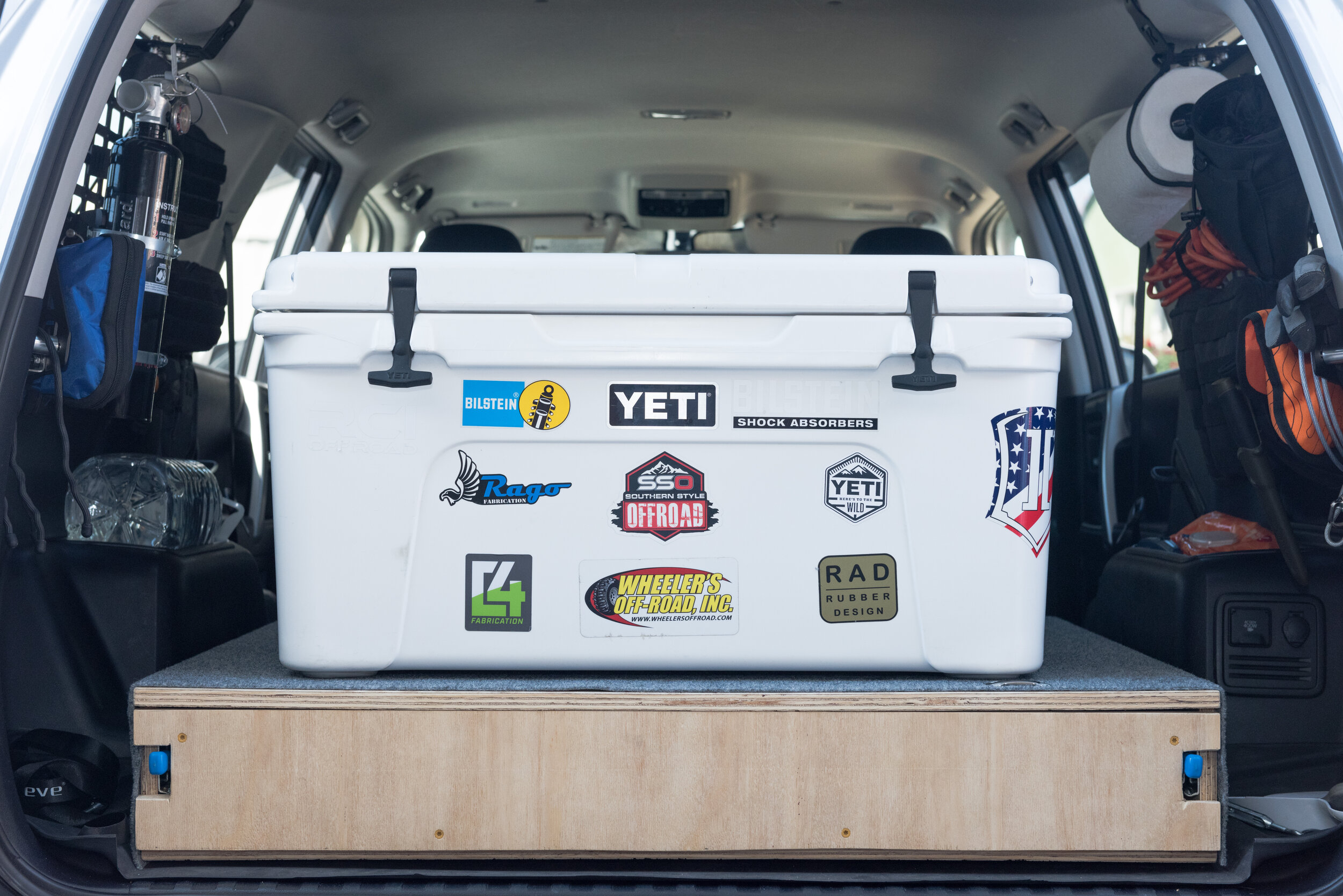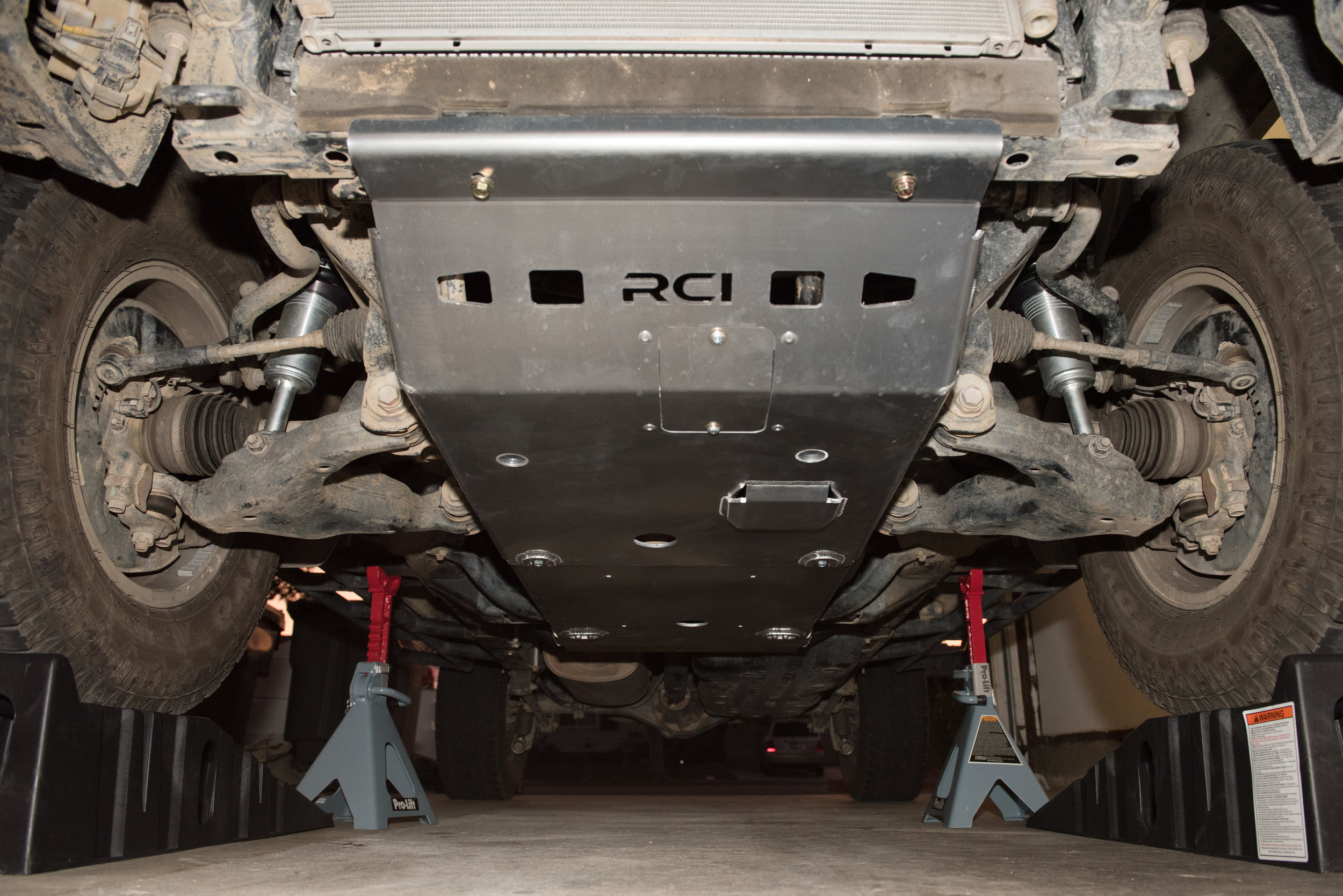Originally I had purchased an ARB ARB505 E-Z Deflator to help deflate my tires before hitting trails. However, despite my love of off-roading, I hate getting my hands dirty with wheel grime while just starting a trail. At the end? No problem. At the start? A nuisance. Call me what you want. It was also troublesome to bend down, install the deflator, keep checking the pressure gauge until 20 psi was met, then remove the deflator and install it onto another tire three more times. Yes, the E-Z Deflator airs down tires very quickly because it removes the valve stem from the core… but it made my fingers and hands very unhappy through the process.
Additionally, I have a VIAIR 400P compressor which does not automatically start/stop based on the back pressure of an inflation gun. It became a nuisance walking back and forth between the tire and compressor to turn on/off the compressor while checking tire pressures during inflation. I also did not want to have to keep asking my wife to turn on and off the compressor when filling all four tires. Furthermore, I found over time that the size of the VIAIR 400P air chuck interfered with the OEM wheels in a way that made it difficult to lock the air chuck at certain angles.
Lo-and-behold almost a year after buying the E-Z deflator I came across a couple articles of people building their own four tire inflator/deflator systems. There are also a few options available that are professionally/commercially built. My only issue with those was that it is designed to accept a female quick connect at the compressor whereas my VIAR 400P compressor has a male quick connect. Also I’d have to buy another pressure gauge to use with their device, or screw on the ARB ARB505 E-Z deflator whenever airing up. Not ideal, and more money and parts.
I decided to give this project a go. Here are a couple cool end results.
The whole setup roughly wraps up and fits into a standard gym bag sack pack (the draw string kind).
Since all four tires are connected to a virtually single airline, all four tires equalize in pressure.
Since I use an oil-filled pressure gauge (resists needle movement), I’m able to read the actual air pressure while the tires are being inflated. I have tested this against my standard stick pressure gauge.
Compact lock-on air chucks that are easy to install and remove.
Quick connects to portable or on-board air compressor.
Deflate and inflate all four tires at once!!!
Components include:
50-Feet of 1/4” Air Line Hose (I used Hybrid, rather than 100% rubber or reinforced PVC)
25’ Tape Measure
PTFE Pipe Thread Tape
ONE ball shut off valve, 1/4” Male NPT to 1/4” Female NPT
ONE 0-60 PSI Pressure Gauge (Lower Mount Connection advised), 1/4” Male NPT
FOUR Haltec H-5265 Standard Bore Lock-on Air Chuck, 1/4” Female NPT
ONE Female Quick Connect Coupler, 1/4” Male NPT
ONE Male Quick Connect Coupler, 1/4” Male NPT
ONE Barstock Cross (Female), 1/4” x 1/4” x 1/4” x 1/4” All Female NPT
FOUR Barb to Male Adapters, 1/4" to 1/4” NPT
TWO Three-Way Barb Tees, 1/4” x 1/4” x 1/4” NPT
TEN Stainless Steel 1/4” - 5/8” Adjustable Worm Gear Clamps (not pictured)
This system was designed to work with my VIAIR 400P Compressor, which has a male quick connect coupler.
Cut the 50’ air hose using a sharp knife or pair of scissors. All measurements are in feet.
Cut two 17’ lengths from the 50’ air house. Each 17’ length should be cut such that each has one of the two existing crimped on 1/4” male NPT connectors.
From the one of the 17’ length air hoses, measure 5’ down the length starting at the 1/4” male NPT connector. Cut each piece such that there are two 12’ lengths (without the existing connector) and two 5’ lengths (with the existing connector).
From the leftover 16’ section (from original 50’ length), cut two 3’ lengths.
Assemble the brass components. Wrap PTFE pipe thread tape around each threaded end to ensure a good seal.
Attach each lock-on air chuck to a barb to male adapter.
Attach the quick connect coupler to one end of the barstock cross.
Attach the pressure gauge to the ball shut off valve, then both to the opposite end of the quick connect coupler on the barstock cross.
Assemble the brass components and air hose. Tighten hose clamps after assembly. Wrap PTFE pipe thread tape around each threaded end to ensure a good seal. Pipe thread tape is not necessary on the barbs.
Assemble 3’ length, which will run from tee to front tires.
Attach one 3’ hose to the middle leg of each barbed tee.
Slide two hose clamps over each length of air hose.
Attach one lock-on air chuck with barb to the other end of the 3’ air hose.
Assemble tee with 12’ length, which will run from front tire to back tire.
Attach the cut end of each 12’ hose to one of the remaining legs of the barbed tees.
Slide two hose clamps over each length of air hose.
Attach one lock-on air chuck with barb to the other end of the 12’ air hose.
Assemble compressor end of line, which will run from the front tire to the compressor (assumedly at front of vehicle).
Thread the existing 1/4” male NPT connector from remaining 5’ air hoses into each remaining side of the barstock cross.
Slide one hose clamp over each 5’ length of air hose.
The barstock tee should be arranged such that the female quick connect will connect toward you to properly orient the pressure gauge during reading.
Connect the cut end of each 5’ air hose to the remaining leg of each tee. Remember that the three-way tee’s middle leg should be facing inwards.
Ensure all connections are snug and hose clamps tightened.
After a few test runs I’ve decided that the ARB ARB505 E-Z Deflator is still the easiest way to deflate my tires. However, using this 4-way inflator tool is definitely the way to go when airing up before hitting the road. Note that I covered the hose clamps with electrical tape to keep off dirt and other debris in lieu of proper crimp-on connections. Just didn’t want anything making its way into the worm gear. Personal preference.




























